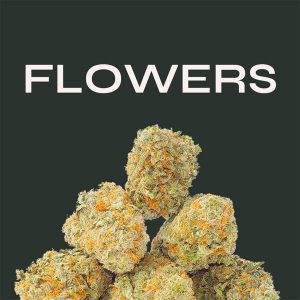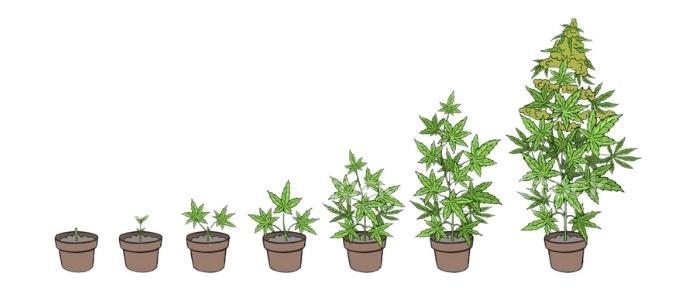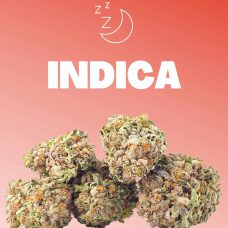Menu

Bud
Goldbuds provides an extensive range of Indica, Hybrid, and Sativa cannabis strains at competitive prices. Our collection features premium AAAA+ quality flowers sourced from experienced cannabis growers. Whether you're seeking top-tier Indica, versatile Hybrid, or energizing Sativa strains, Goldbuds ensures you receive the highest quality cannabis products on the market.
- Home
- >
- Bud
Bud
What is Indica and what is its history?
The indica flower boasts a rich history, dating back to the early sixteenth century when it was first cultivated in India and eventually spread westward. Among the two primary cannabis strains—indica and sativa—indica is known for its calming and sedative effects, while sativa is recognized for its uplifting and energetic qualities. What makes indica flower particularly unique is its blend of genetics from both cannabis sativa and cannabis indica species. You might be curious about the origins of these names and their significance to the cannabis plant. Discover more about the history of indica flower, how it evolved, and its common uses in wellness and relaxation.
What is Indica flower?
Indica flower has been cultivated for over 2,000 years in India, where it’s commonly known as Hindi Kush. Historically referred to as “Nepal,” meaning “the land of snow,” this strain gained popularity through the temple of Ganjam, where worshippers would use the strain during prayer and carry it with them afterward. The Indica cannabis plant is easily recognizable by its broad, serrated leaves. This versatile variety is one of the most popular in the cannabis industry due to its potent medical benefits, including relief from pain, anxiety, and insomnia.
History of Indica
The Indica flower is a type of plant that has been around since the beginning of time. This flower species has been used for medicinal purposes and it has been utilized in curries and tea. The indica flower was also used in India to make bhang, a drink usually made from an infusion of cannabis leaves and flowers, which is very popular in India. The Indian Hemp Plant, called Indica, was a strain of Cannabis Sativa which found its way to India around 3000 BC. In the old world, there were many varieties of cannabis which were used for medicinal reasons. The strain was not generally cultivated until the British began growing it for use in hemp from the late 18th century. As demand for hemp grew, breeders developed a new variety called indica. Because this strain could grow tall and robust in sun and rain without requiring much space, it became popular in India and the United States in the late 1960s and early 1970s when people began looking for plants that could be grown indoors.
Uses of Indica
Indica flowers are cultivated primarily for their potent leaves rather than their blossoms. The term Indica or Indica shatter originates from India, and these flowers are known for their high concentration of CBD. This is a key distinction between Indica and Sativa strains. Indica flowers have been used for various purposes, but their most common use is smoking, offering a strong, pungent aroma with a distinctive balance of sweet and sour flavours. In addition to recreational use, Indica flowers have multiple medicinal applications. They can be consumed in various forms—smoked, eaten, infused in drinks, or applied topically for therapeutic effects. Indica is particularly popular for its relaxing properties, making it a go-to choice for those seeking pain relief, stress reduction, and sleep aid.
The Effects
Indica flowers are the original flowers that most forms of cannabis is derived from. These flowers tend to give you a sense of relaxation and sedation, which makes them perfect for nighttime use. They also produce THC levels that are higher than Sativa flowers. Indica flowers are known for their sedative effects, which are often compared to an indica-dominant strain of marijuana. Cannabis indica is the primary type of cannabis flower and is commonly used in the production of hashish or marijuana. Indica flowers have a sweet-sour taste and can be eaten raw, dried, or made into tea.

How to grow Indica
Indica cannabis flowers tend to be shorter and bushier compared to sativa strains, offering a higher yield of more potent buds. Sativa flowers, by contrast, are larger and more open, typically producing a lower yield of smaller buds. Indica strains are popular in both marijuana and hemp production and can also be cultivated as ornamental flowers. Traditionally used for medicinal purposes, indica plants thrive in controlled environments with temperatures ranging from 55 to 70 degrees Fahrenheit. Although they prefer warm conditions, indoor growers can extend the growing season by using artificial lighting, such as fluorescent lights, to control light exposure and optimize bud production.
The History of Sativa Flower
In today’s market, cannabis is more accessible than ever before. A significant number of cannabis consumers in the U.S. report having tried sativa strains at least once in their lifetime. With the growing popularity of cannabis culture, there’s been a surge in knowledge surrounding marijuana, its different strains, and their effects on the body. This increased awareness has also led to more interest in products like CBD oil, edibles, and THC concentrates, further expanding the industry.

What is Sativa Flower?
Sativa flower is a popular type of cannabis known for its strong, uplifting high. The term “sativa” refers to the plant’s distinctive appearance, typically characterized by a taller stem and upward-growing leaves. While many associate sativa strains with high THC levels, this isn’t always the case. Sativas often produce a cerebral high, offering a calming yet energizing effect on the mind. These strains are frequently found in medical cannabis products due to their mental stimulation and mood-enhancing properties. Sativa flower is a top choice for those seeking mental clarity, focus, and an active experience.

The History of Sativa Flower
Sativa flower is renowned for its energetic, uplifting, and mind-expanding effects, often described as ‘psychedelic.’ Historically, Sativa has been used in various ways and is not a specific marijuana strain but rather a type of cannabis plant. Known for its high THC content, Sativa is typically considered the most invigorating and energizing form of cannabis. The name “Sativa” originates from the Latin word meaning “to satisfy,” reflecting its reputation for delivering a satisfying, uplifting experience. Whether you’re seeking a boost in creativity or energy, Sativa cannabis is a popular choice among consumers..
Benefits of Sativas
As the name implies, Sativa cannabis plants tend to have a shorter flowering period compared to Indica strains. Sativa’s often grow taller and come in a variety of vibrant colours. Sativa shatter and Sativa flower are known for their higher resin content compared to Indica varieties. These plants offer an uplifting, cerebral high, often boosting creativity and focus. The benefits of Sativa strains extend beyond just treating mood disorders, making them a popular choice for those seeking enhanced mental clarity and energy.










